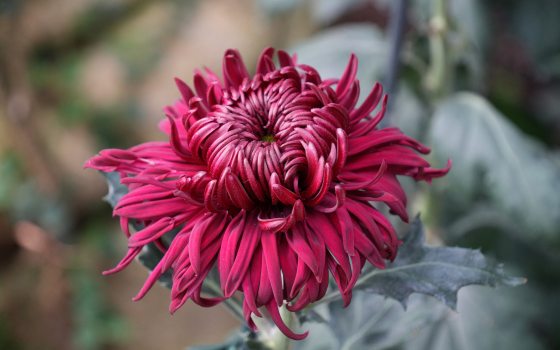
Cannas on the center walk in Longwood's Conservatory.
The beauty of the canna inspired Longwood to begin a breeding program in the 1970s. Our program has produced more than 18 named cultivars that have been released into the trade and used here at Longwood. Some of the cultivars are named after Philadelphia area towns, rivers, and themes such as ‘Lenape’, ‘Conestoga’, and ‘Freedom’. These plants are compact with flowers that have a self cleaning quality (meaning that the dead flowers fall to the ground instead of hanging on the plant). In addition to terrestrial varieties, we have also introduced several aquatic varieties.
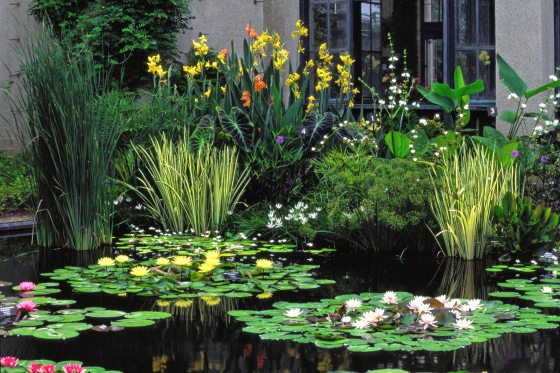
Aquatic cannas on display in the Waterlily Display. Photo by Larry Albee.

A canna leaf with virus symptoms.
The Longwood cannas have been used in our Gardens for many years and have even won awards in England. Unfortunately, they are not immune to viruses. Most of Longwood’s cannas have been infected from outside stock that was brought into the Gardens. This led to the focused effort here at Longwood to produce virus-free cannas.
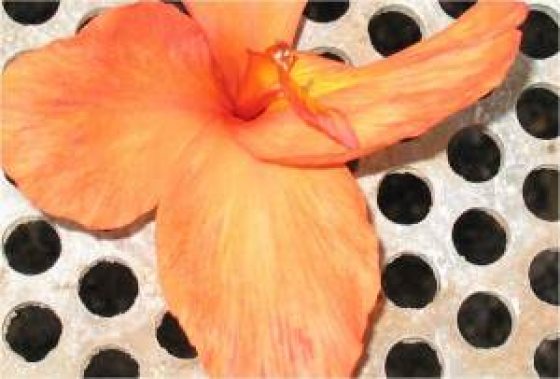
A canna flower with virus symptoms.
Three viruses that affect cannas include bean yellow mosaic virus and canna yellow streak vrus, which are members of the potyvirus group, and canna yellow mottle virus, which is a badnavirus. Potyviruses should not be passed from the parent plant through seeds, and plants grown from seed of potyvirus-infected plants should be free of potyvirus. The canna yellow mottle virus is of special concern because it may pass from parent to seed, which is unusual for viruses.
The symptoms of virus infections in cannas include necrotic veins in the leaves, and streaks of lighter colors on the petals (instead of a solid-colored healthy petal, the infected petals will look like someone painted them with lighter watercolors). Eventually, more and more necrotic veins will appear. The leaves will also appear chlorotic. The plant will lose vigor and approach death. Plants that appear to have a virus should be rogued out and destroyed.
Since most of our Longwood stock had contracted one virus or another, we decided to grow a population of plants from seed in hopes of creating virus-free plants. A total of about 500 canna seedlings were grown from open-pollinated seeds collected from canna stock on Longwood property. From this population, we selected ten superior seedlings in 2008 for use and further study. All selected 2008 seedlings tested negative for virus. These plants were propagated, and we began the process of establishing them in tissue culture.
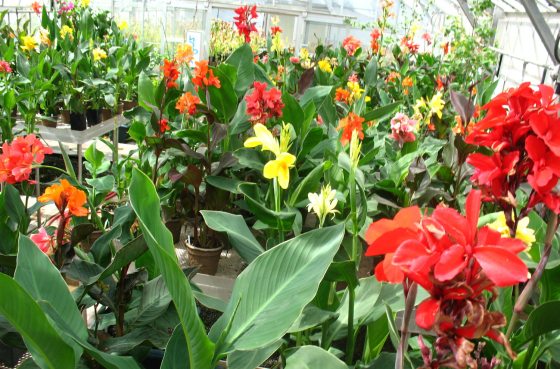
Seedling cannas in Longwood's Research Department.
You can see two of these cannas now in the Conservatory: canna #9 is a beautiful medium pink and is planted around the perfume bottle in the center walk of the Orangery; canna #10 is dark pink and is planted in the North East corner of the Orangery. Canna #9 has been established in tissue culture and is growing nicely. However, canna #10 is being more difficult or, some may say, stubborn. It does not grow and multiply in tissue culture as readily.
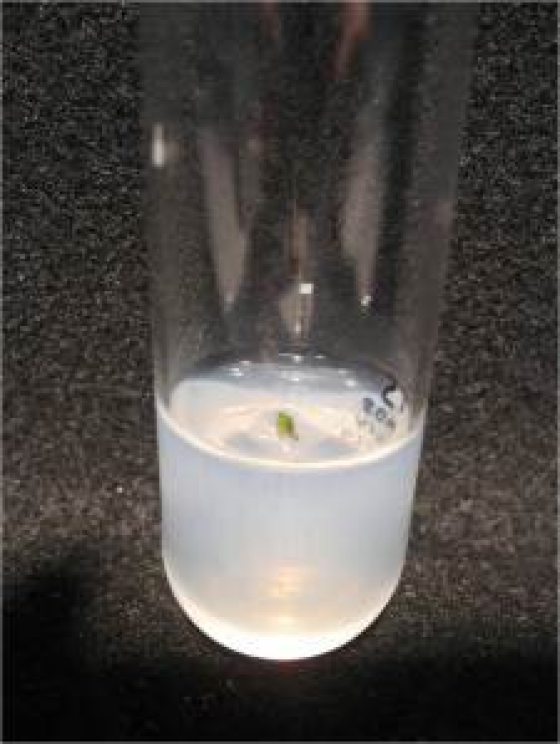
Canna-isolations.
Another twelve superior seedlings were selected from the seedling population in 2009. Unfortunately some of these seedlings tested positive for canna yellow mottle virus, which lends evidence that the virus is transmitted through seeds. We placed the clean plants in the same house with the clean plants from 2008, while the virus-infected plants were isolated. The clean plants will also be established in tissue culture. Once clean stock is established in tissue culture, it will remain clean. It can then act as a source of clean plant material in the future.
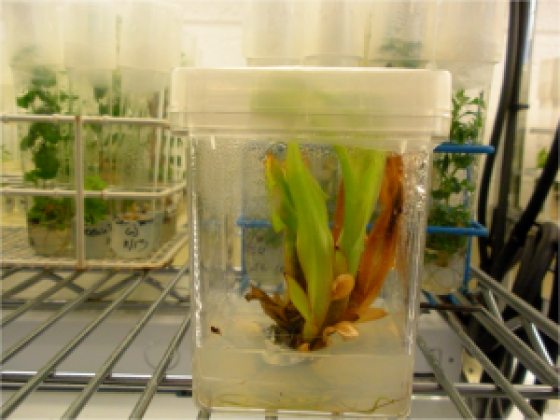
Canna in tissue culture box.
Cannas in general have proven to be finicky about their media in tissue culture—one media does not work for every canna. When establishing them in culture, each cultivar is placed in several different types of media in hope that they will be happy with at least one of them. The process itself can take years. Chrysanthemums can be established and multiplied in culture in a few months. Cannas can take two years to establish and multiply—only after you find the correct media! If you don’t find the correct media, they may not grow at all. Oh, the patience you must have with cannas!
When our selected plants have multiplied sufficiently in tissue culture, we plan to use them here at Longwood. We also hope that some will be available for purchase at your local garden center, and the canna can be given a second chance. Currently we have five virus free varieties growing happily in test tubes. This stock gives us the capability of continuously producing clean crops of cannas. Many more test tubes hold cannas in various stages of development that may or may not yield clean stock. The canna cleanup process will take a lot of time and effort, but I think we "canna" save the canna. If you are interested in learning more about our canna breeding program, come to Longwood on September 7, 2010, when you can join a special tour of our Canna Breeding Program. The tour begins at 1:00 pm and meets at the Exhibition Hall Clock in the Conservatory.
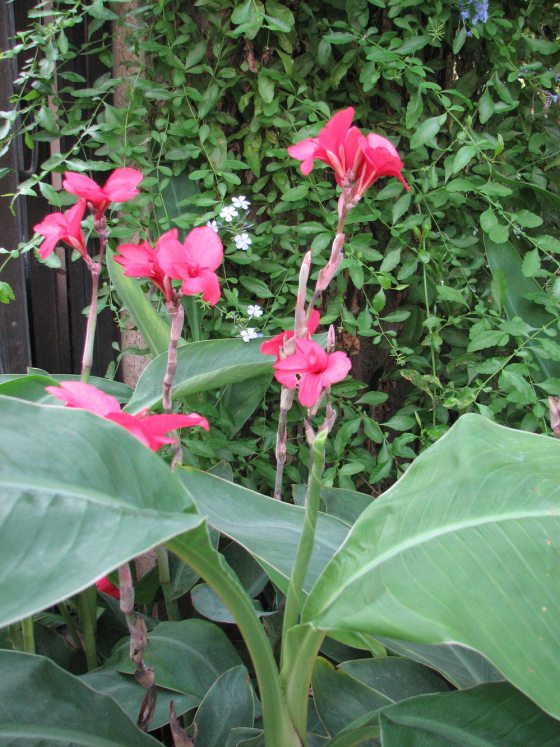
Cannas currently on display in Longwood's Conservatory.


